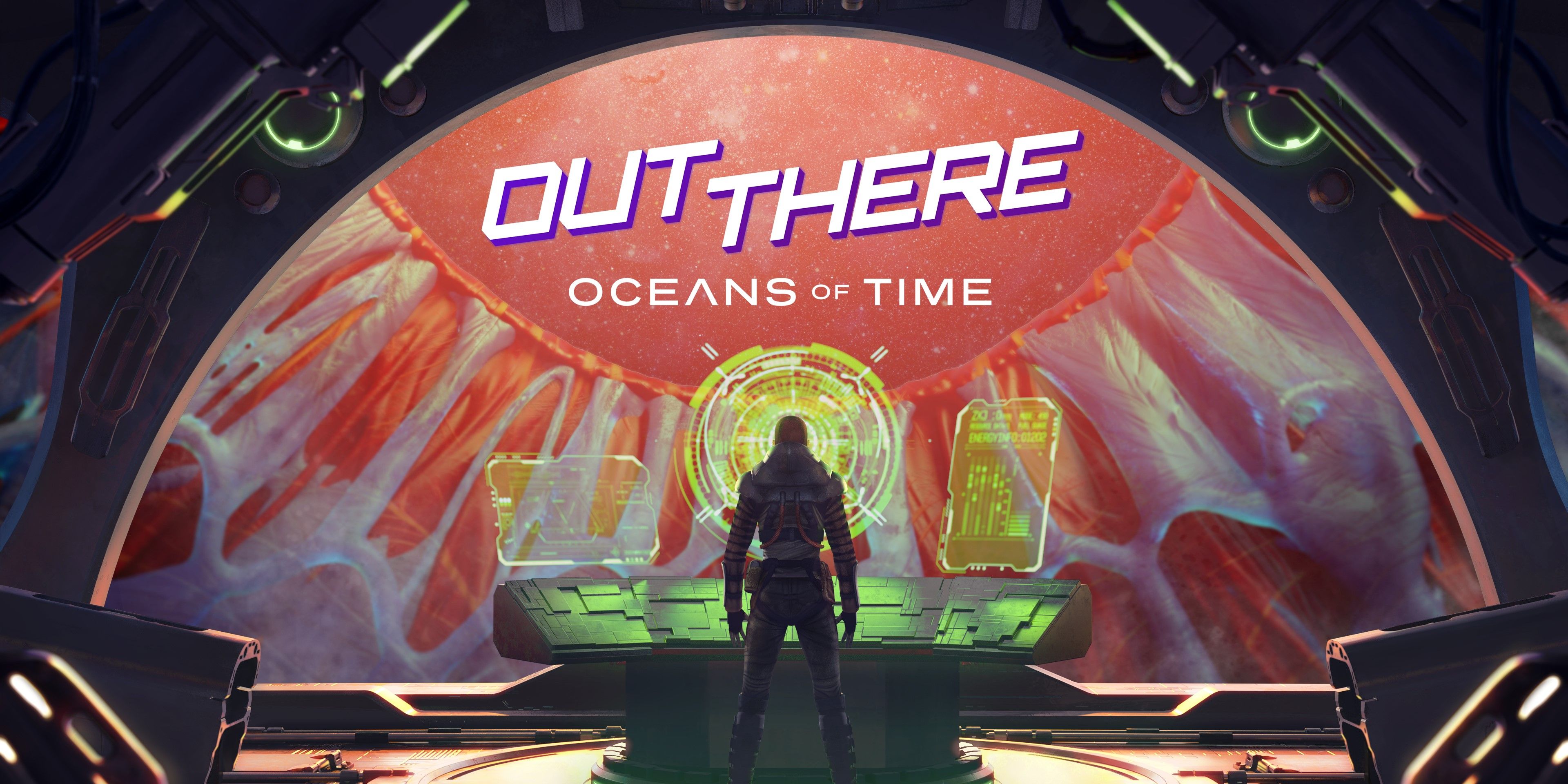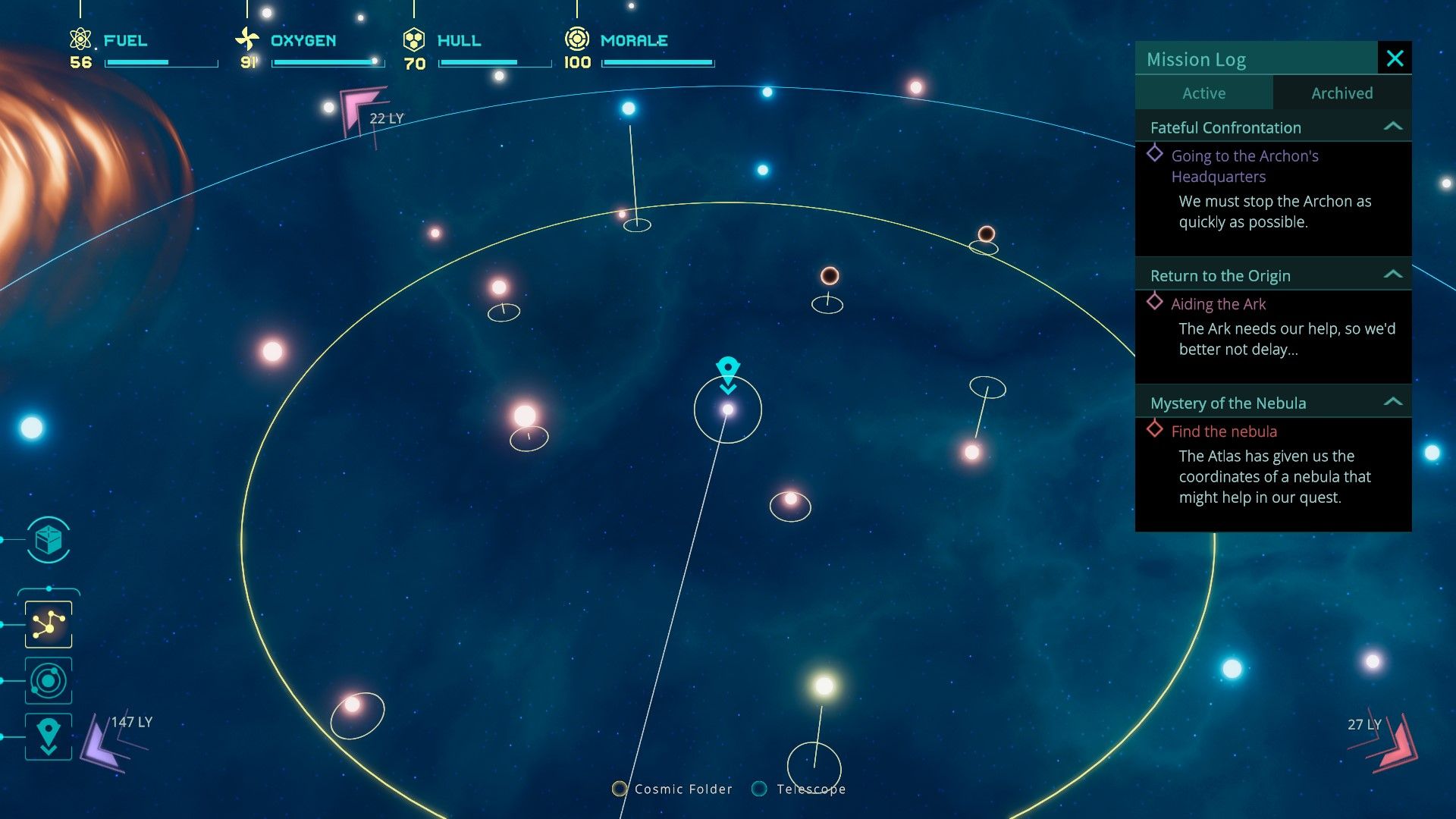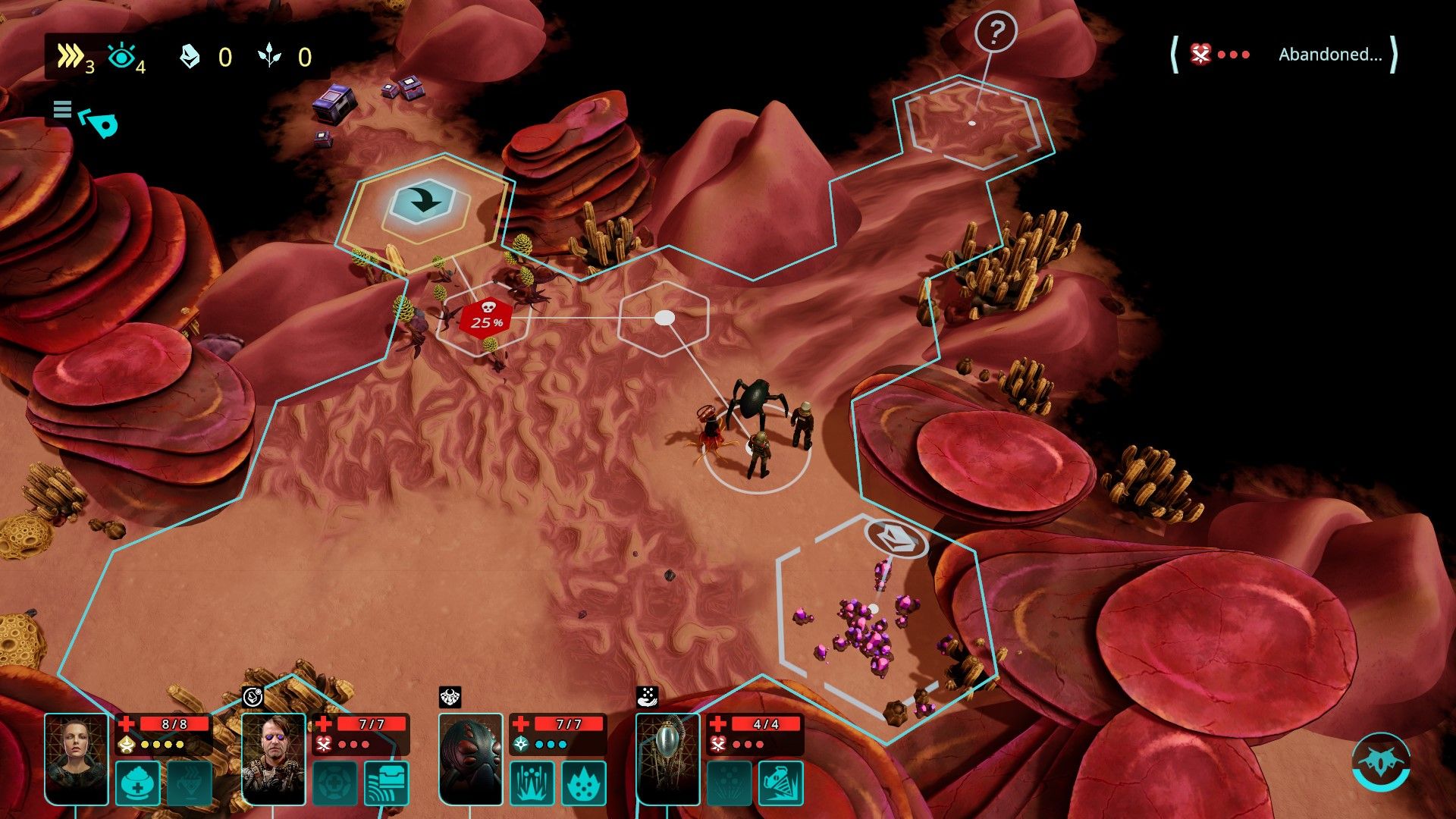Story and survival games are two things that don’t often go together. The most obvious reason for this is that, in general, the struggles of moment-to-moment survival tend to clash with the push to move forward that is necessary for a story to be told. Out There: Oceans of Time, a game by Mi-Clos Studio and published by Modern Wolf, manages to create an interesting balance between these disparate aspects of design by scripting the destinations while letting the player fill in their own journey.
Out There: Oceans of Time follows Commander Nyx, the captain of a starship who has been tasked with taking an entity known as the Archon to a prison for the crime of rebelling against the interstellar government. On the way there, she is waylaid by followers of her charge, who easily overpower her vessel and force her and the crew to evacuate via cryogenic escape pods. Eventually Nyx wakes up on a deserted world of plantlife, where she manages to rendezvous with her head engineer, who helps them escape on a nearby crashed ship. It doesn’t take long for the two of them to figure out that it has been a hundred years since their ill-fated prison transport, and everything has gone the Archon’s way in the meantime. Despite being on the back foot and struggling to limp their way across the stars, Captain Nyx and her crew know that they have to clean up their century old mess or die trying.
This setup provides the context necessary for players to have a reason to trek the cosmos. To survive this voyage, the basic necessities of interstellar travel must be maintained. Oxygen, Fuel, Hull Integrity, and Morale are all constantly being taxed, so their continual upkeep is paramount for the mission to continue. This balancing act serves as the main gameplay in Out There, and while it is simple, it works due to the risk/reward aspect that every one of the player’s actions has. Whatever ship Commander Nyx may be flying at any given time can be upgraded to improve its functionality or efficiency, but the same elemental materials that are used to keep the basic necessities up are often needed for these improvements. This means that many decisions can be boiled down to whether it is preferable to keep things just in case something goes awry or to alleviate what could become a future issue.
While they don’t take up as much playtime as the spacefaring portion of the game, there are away missions that the player can find on some planets throughout their journey. While they are uncommon, they make for a nice change of pace from the typical gameplay, though they are a little barebones. Away missions task the player with creating a maximum four-man team with their available crew, and then navigating them through a hex tile map of the area of interest. The environments that these maps depict can be interesting and pretty, but the navigation itself is largely dull. There are no moving threats for the crew to combat or anything for them to do except park themselves on certain tiles in order to collect resources or experience text events. The only legitimate threats that can be found on these missions are hazardous tiles which can more often than not be avoided, or at least heavily neutered with items. It’s a fun system in theory and the rewards are plenty, but there is simply more style to it than substance.
Unfortunately, gameplay is not the only place where Out There falls short, as it also suffers in a technical capacity. At several seemingly random points throughout the time spent with the game, it crashed severely, to the point where even the computer it was being played on ceased responding to commands and needed to be rebooted. One particular instance saw a crash constantly occur at the end of one of the away missions during the results screen. Said mission had to be played three times in its entirety before a moment of luck allowed the game to advance beyond this point. This situation wouldn’t be as bad if it weren’t for the game’s save system, which only allows for the game to be continued on a single save file. There are checkpoints, but they are so infrequent that a true softlock could easily result in an hour’s worth of progression, or more, being removed at the whim of its instability.
While it may not tick every box in the quality department, there is something to be said for a game with an interesting core and Out There: Oceans of Time does hit that mark. It’s a story and universe that really offers a unique feeling sci-fi experience, and with a little time this ocean of stars could be more than worth flying through, even if there needs to be some more stability prior to that occurring.
Out There: Oceans of Time released on May 26th, 2022 for PC. Screen Rant was provided a digital Steam key for the purposes of this review.



